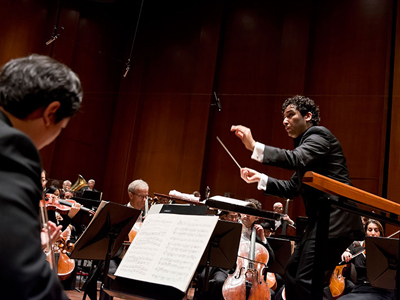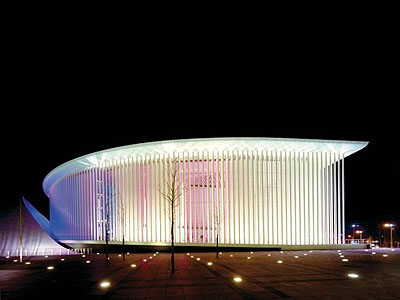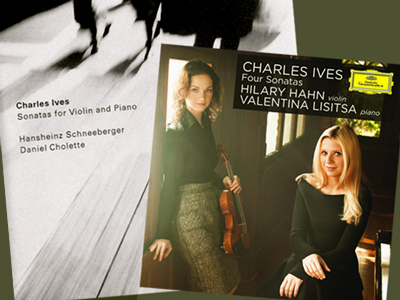By: Edna Landau
To ask a question, please write Ask Edna.
Dear Edna:
I have been told by many of my musician friends that it is very gratifying and helpful to perform in house concerts because they allow for direct communication with a small and appreciative audience and an opportunity to play through repertoire in an unpressured environment. In some instances, they might even put a little money in your pocket. Can you tell me how I might go about identifying such opportunities? Is there any central house concert website? —Andrew K., violinist
Dear Andrew:
While it is true that house concerts take place all over the world, I am not aware of any directory that lists them. This may well be because of the need to maintain privacy and ensure security when opening one’s home to the public. There is an informative website, ConcertsinYourHome.com, which does provide its members with information about hosts of house concerts, enabling them to get in touch directly, but it is my impression that the opportunities are for singer-songwriters and folk music performers, not classical. They do offer a free and helpful “House Concerts Guide”, written by their founder, Fran Snyder, which walks the reader through all aspects of performing in or presenting a house concert. Most of what they cover is universal to any genre of music.
A good place for you to start would be to ask your musician friends whether they can introduce you to the individuals who have hosted their concerts. Perhaps you can also encourage them to program a work in their upcoming concerts that might include you. If you are still a student, you should visit your school’s concert office to see if they have a list of hosts. You could also check with the Development office, as they often coordinate private concerts for current or potential donors. Let them know of your interest in participating in them. Set aside some time to think about possible concert hosts among family friends, fans, or people you may have met in a variety of professional or social situations. Violinist Hilary Hahn was able to secure a substantial amount of the funding for her commissioning project that is generating twenty-seven new encore pieces via a house concert hosted by someone she happened upon by chance.
In New York, where I live, there are a wide variety of house concerts taking place regularly. Some of them, such as the series at the home of Shirley and Sid Singer, have been going on for as long as twenty years and generally feature up and coming soloists and chamber ensembles who are recommended by managers or returning by popular demand. Others, such as chamber music concerts hosted by Dr. Daniel Kuhn, a cellist and psychiatrist by profession, are motivated by the host’s desire to play great music with artists they admire. A third category would be concerts for the benefit of a designated charity, such as Classical Action’s Michael Palm Series, which typically feature artists of some renown. None of these would be easy for you to penetrate. However, Michael Reingold, Producer of NYC House Concerts for the past six years, works with a variety of hosts in presenting 25-30 concerts per year. Some of the artists are his own choices outright but others approach him by e-mail, and he tries to introduce new faces into the mix. His particular motivation is to introduce his friends and their friends to the beauties of classical music. He also is happy to afford artists the opportunity to try out a new program and to gain experience in communicating verbally and socially with audiences that are new to this music. Neither he nor the artist(s) receive any financial gain but if the host is in agreement, the artists can put a basket at the door for voluntary donations, and they can always feel comfortable selling cd’s. If you live in New York, you should definitely acquaint yourself with this organization.
Perhaps the most entrepreneurial individual I have met in regard to pursuing house concerts (and more) is pianist and composer, Kimball Gallagher. A graduate of Rice University and Juilliard, he is the founder of PIANOKEY, “a salon concert company that is dedicated to the revival of the romantic salon culture”. He is currently in the midst of “The 88 Concert Tour”, which he organized totally on his own and which has recently included performances throughout the U.S., as well as in Shanghai, Taipei, Mongolia, Hanoi, Bangkok, Tunisia, Turkey and Afghanistan. Each concert host receives a short personalized piano work that he writes for them, using a compositional system to spell out musical notes to match their names, and which is included as part of the program. Mr. Gallagher receives a fee for these concerts which, added to income from private teaching, allows him to make a reasonable living. He does not conceive of the concerts as preparation for more significant events but rather as events in themselves. He connects with his audiences in interesting and innovative ways that wouldn’t be possible in a larger venue; for example, playing a virtuosic Chopin etude at a slower tempo before performing it as it was intended to be heard. His success at international networking is quite spectacular, and yet it breaks down into small, logical steps that follow from one another. He keeps track of every new contact he meets and has the charm and confidence to ask them to help, If he believes they can. When he has needed to fill out a tour in Asia, he has contacted Juilliard to see which alumni might be residing there. There is much to learn from Mr. Gallagher’s intrepid approach to organizing his own concert life. The fundamental answer to your question is: Don’t look for a network of house concerts. Research them as best you can but in the end, don’t hesitate to create one!
To ask a question, please write Ask Edna.
© Edna Landau 2011
This is the final “Ask Edna” column of 2011. I wish all our readers a very happy holiday season and look forward to reconnecting with you on January 5, 2012!


